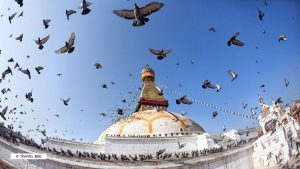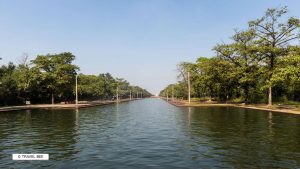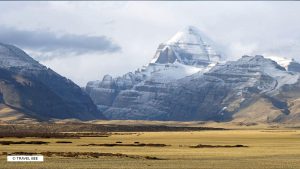
Historical Landmarks and Temples in Nepal
Nepal, a country nestled in the Himalayas, is renowned for its rich cultural heritage and breathtaking landscapes. It boasts numerous historical landmarks and temples that not only hold religious significance but also showcase the architectural brilliance and cultural diversity of the region. This detailed exploration will delve into some of the most notable historical sites and temples in Nepal, each offering a unique glimpse into the country’s past and spiritual essence.
Historical Landmarks
1. Kathmandu Durbar Square
Kathmandu Durbar Square, also known as Hanuman Dhoka Durbar Square, stands as a testament to Nepal’s royal history. Located in the heart of Kathmandu, this UNESCO World Heritage Site was once the seat of the ancient Malla kings who ruled over the Kathmandu Valley. The square is a complex of palaces, courtyards, and temples, including the magnificent Taleju Temple, Kumari Ghar (House of the Living Goddess), and the intricately carved Basantapur Tower. Each structure within the square reflects a blend of Hindu and Buddhist architectural styles, adorned with ornate wood carvings and sculptures that narrate tales of Nepal’s cultural and political evolution.
2. Bhaktapur Durbar Square
In the ancient city of Bhaktapur lies another UNESCO World Heritage Site, Bhaktapur Durbar Square. Known for its well-preserved medieval architecture and urban planning, the square is a treasure trove of Newari craftsmanship. Highlights include the 55-Window Palace, which showcases intricate wood carvings and lattice windows, the Vatsala Temple dedicated to Goddess Vatsala Devi, the towering Nyatapola Temple with its five-tiered pagoda structure, and the Bhairavnath Temple dedicated to Bhairava, the fierce manifestation of Lord Shiva. Bhaktapur Durbar Square is not just a historical site but a living museum that transports visitors to Nepal’s glorious past.
3. Patan Durbar Square
Patan Durbar Square, located in Lalitpur district, is a masterpiece of Newari architecture and urban design. This UNESCO World Heritage Site boasts an array of palaces, courtyards, and temples, including the Krishna Mandir renowned for its stone carvings and ancient tales, the Golden Temple (Hiranya Varna Mahavihar) adorned with golden statues and metalwork, and the Mahabouddha Temple known for its terracotta facade depicting thousands of Buddha images. Patan Durbar Square is a vibrant cultural hub where traditional craftsmanship meets religious devotion, offering insights into the artistic finesse of the Malla period rulers.
4. Swayambhunath Stupa (Monkey Temple)
Perched atop a hill west of Kathmandu Valley, Swayambhunath Stupa is an ancient religious complex revered by both Buddhists and Hindus alike. Also known as the Monkey Temple due to its playful resident monkeys, Swayambhunath offers a panoramic view of Kathmandu Valley and the surrounding mountains. The stupa’s whitewashed dome, crowned with a gilded spire featuring the all-seeing eyes of Buddha, symbolizes wisdom and compassion. Surrounding the stupa are numerous shrines, temples, and Tibetan Buddhist monasteries (Gompas) adorned with prayer flags, making it a serene sanctuary for spiritual seekers and travelers.
5. Lumbini
Lumbini, located in the Rupandehi district of Nepal, is the birthplace of Siddhartha Gautama, who later became Buddha. This UNESCO World Heritage Site is a pilgrimage destination for millions of Buddhists worldwide. The Sacred Garden of Lumbini encompasses the Maya Devi Temple marking the exact spot where Queen Maya Devi gave birth to Buddha under a sal tree, the Ashoka Pillar erected by Emperor Ashoka in the 3rd century BCE, and the Puskarini Pond where Buddha’s mother bathed before giving birth. Lumbini is not only a place of historical and spiritual significance but also a center for Buddhist teachings, meditation, and pilgrimage.
6. Janaki Mandir
Janaki Mandir, located in Janakpur city of Nepal, is an architectural gem dedicated to Goddess Sita, the consort of Lord Rama in Hindu mythology. Built-in the Mughal-Rajput style during the 19th century, the temple is renowned for its white marble structure adorned with intricate carvings depicting scenes from the Ramayana. Janaki Mandir attracts devotees and tourists, especially during the Vivah Panchami festival celebrating the divine marriage of Sita and Rama, which is observed with grand processions and religious fervor.
7. Rani Mahal
Rani Mahal, often referred to as the “Queen’s Palace,” is a historic mansion located on the banks of the Kali Gandaki River in Palpa district. Built-in the 19th century by General Khadga Shumsher Jang Bahadur Rana, Rani Mahal showcases a blend of European and Mughal architectural styles. The palace’s strategic location and stunning riverside setting add to its allure, making it a popular destination for history enthusiasts and travelers seeking to explore Nepal’s royal heritage amidst picturesque surroundings.
Temples
Nepal’s temples are not just places of worship but also repositories of cultural heritage and architectural marvels. Each temple reflects the religious diversity and spiritual essence that define Nepal’s cultural landscape, drawing visitors from around the world to experience their profound significance.
1. Pashupatinath Temple
Pashupatinath Temple, situated on the banks of the Bagmati River in Kathmandu, is Nepal’s most sacred Hindu pilgrimage site dedicated to Lord Shiva. This UNESCO World Heritage Site encompasses a sprawling temple complex with pagoda-style architecture, including the main Pashupatinath Temple adorned with silver doors and golden spires. The temple is a center for Hindu rituals, cremation ceremonies, and religious gatherings, attracting devotees and tourists seeking spiritual solace and cultural insights.
2. Boudhanath Stupa
Boudhanath Stupa, located northeast of Kathmandu city, is one of the largest stupas in Nepal and a UNESCO World Heritage Site. This colossal mandala-shaped stupa is a revered pilgrimage site for Tibetan Buddhists and a hub for Buddhist rituals and prayers. Adorned with colorful prayer flags and surrounded by monasteries (Gompas), Boudhanath exudes a tranquil ambiance conducive to meditation and spiritual contemplation. The stupa’s imposing presence and intricate design, including the Buddha’s eyes gazing in all four directions, symbolize enlightenment and universal compassion.
3. Swayambhunath Stupa (Monkey Temple)
Swayambhunath Stupa, perched atop a hill west of Kathmandu Valley, is an ancient religious complex revered by both Buddhists and Hindus alike. Also known as the Monkey Temple due to its playful resident monkeys, Swayambhunath offers a panoramic view of Kathmandu Valley and the surrounding mountains. The stupa’s whitewashed dome, crowned with a gilded spire featuring the all-seeing eyes of Buddha, symbolizes wisdom and compassion. Surrounding the stupa are numerous shrines, temples, and Tibetan Buddhist monasteries (Gompas) adorned with prayer flags, making it a serene sanctuary for spiritual seekers and travelers.
4. Changu Narayan Temple
Changu Narayan Temple, located on a hilltop in Bhaktapur district, is Nepal’s oldest Hindu temple dating back to the 4th century. Dedicated to Lord Vishnu, the temple is renowned for its exquisite stone, wood, and metal carvings depicting Vishnu in various avatars and scenes from Hindu mythology. The temple complex also houses the Changu Museum, which showcases ancient artifacts and sculptures, offering insights into Nepal’s religious heritage and artistic traditions.
5. Muktinath Temple
Muktinath Temple, situated at the foot of the Thorong La mountain pass in Mustang district, holds great significance for both Hindus and Buddhists. Hindus believe that Muktinath is a place of salvation (moksha), while Buddhists revere it as a sacred site associated with Guru Rinpoche (Padmasambhava). The temple complex includes the Muktinath Temple dedicated to Lord Vishnu and the Jwala Mai Temple with its eternal flame and 108 water spouts, symbolizing purity and spiritual cleansing. The breathtaking landscape surrounding Muktinath, amidst the Annapurna and Dhaulagiri mountain ranges, enhances its spiritual allure and attracts pilgrims and travelers seeking divine blessings and natural beauty.
6. Manakamana Temple
Manakamana Temple, located in Gorkha district, is dedicated to the Hindu goddess Bhagwati, an incarnation of Parvati. The temple is believed to fulfill the wishes of devotees who visit to seek blessings and divine intervention. Accessible via a scenic cable car ride offering panoramic views of lush valleys and terraced fields, Manakamana Temple combines spiritual significance with natural beauty, making it a popular pilgrimage site and tourist attraction.
7. Tal Barahi Temple
Tal Barahi Temple, also known as the Lake Temple, is situated on an island in Phewa Lake, Pokhara. Dedicated to Goddess Varahi, an incarnation of Goddess Durga, this two-story pagoda-style temple is surrounded by tranquil waters and offers stunning views of the Annapurna mountain range. Visitors can reach the temple by boat and experience its serene ambiance amidst nature’s splendor, making it a cherished destination for both religious worship and leisurely excursions.
Why Tourists Visit These Sites
Tourists from around the globe are drawn to Nepal’s historical landmarks and temples for a multitude of reasons, each offering a unique blend of cultural immersion, spiritual exploration, and natural beauty:
- Cultural Exploration: Nepal’s historical sites and temples provide an immersive experience into the country’s rich cultural heritage, from ancient rituals to architectural splendor.
- Spiritual Pilgrimage: Many visitors embark on spiritual journeys, seeking solace and enlightenment at sacred sites revered by Hindus and Buddhists alike.
- Architectural Marvels: The intricate craftsmanship and diverse architectural styles spanning centuries captivate architecture enthusiasts and history buffs.
- Natural Scenery: Surrounded by majestic mountains and lush landscapes, these sites offer breathtaking views and a serene environment conducive to introspection and relaxation.
- Accessibility and Support: With the assistance of Travel Bee, a trusted 24/7 support travel agency, visitors can navigate Nepal’s diverse terrain and cultural sites with ease, ensuring a memorable and hassle-free travel experience.
Explore Nepal with Travel Bee
Planning a trip to Nepal? Travel Bee offers unparalleled support and expertise to enhance your journey through Nepal’s historical and spiritual wonders. Whether you’re intrigued by ancient temples, serene stupas, or royal palaces, Travel Bee provides comprehensive travel services tailored to meet your needs:
- Customized Itineraries: From cultural tours to trekking adventures, Travel Bee designs personalized itineraries that cater to your interests and preferences.
- Expert Guidance: Benefit from local insights and expert guidance to uncover hidden gems and cultural nuances throughout your journey.
- Logistical Support: Enjoy seamless travel arrangements, including accommodations, transportation, and guided tours, ensuring a stress-free exploration of Nepal’s diverse landscapes and historical sites.
- 24/7 Assistance: With round-the-clock support, Travel Bee ensures your safety and comfort, allowing you to focus on immersing yourself in Nepal’s unparalleled beauty and cultural heritage.
Conclusion
Nepal’s historical landmarks and temples are windows into its rich tapestry of culture, spirituality, and natural beauty. Each site holds a unique story, blending ancient traditions with architectural splendor and breathtaking landscapes. Whether you seek spiritual enlightenment, cultural immersion, or simply awe-inspiring views, Nepal’s historical sites and temples promise an unforgettable journey. With Travel Bee’s dedicated support and expertise, your exploration of Nepal will be a transformative experience, leaving you with cherished memories and a deeper appreciation for this extraordinary Himalayan nation.




